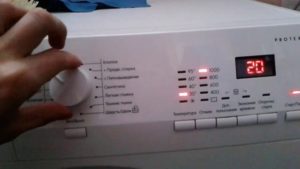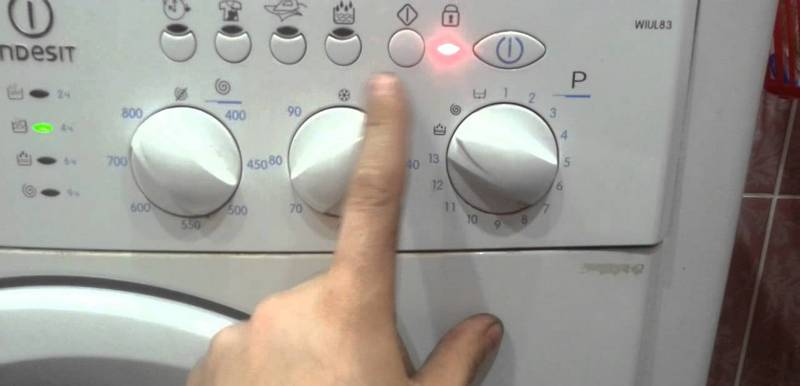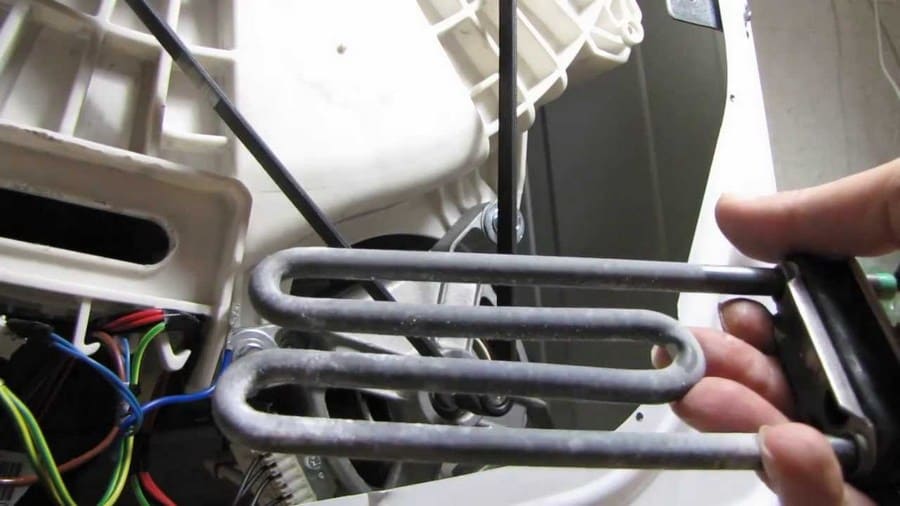 Washing machines, like other household appliances, become unusable from time to time. The situation when a washing machine does not switch washing modes occurs to everyone sooner or later and brings many problems. In this case, the device almost always does not go into rinse and spin modes. This article will discuss how to identify the cause of this malfunction and fix it yourself without contacting service centers.
Washing machines, like other household appliances, become unusable from time to time. The situation when a washing machine does not switch washing modes occurs to everyone sooner or later and brings many problems. In this case, the device almost always does not go into rinse and spin modes. This article will discuss how to identify the cause of this malfunction and fix it yourself without contacting service centers.
Why did the washing modes stop switching? How to independently determine the cause
You should not immediately disassemble the washing machine; first you should try to run the wash several times and at the same time switch all available modes. Most modern models have built-in automatic diagnostic capabilities. So, if any technical malfunction occurs, an error code will be displayed. After receiving it, it will not be difficult to determine the problem. But what to do if the system cannot independently classify the fault?
The reason that the washing machine does not switch modes and cannot perform self-diagnosis is usually 3 typical faults:
- The washing machine only operates in the last mode set and does not respond to all user attempts to switch modes. In this case, we can confidently say that the switch or control module has failed. The switch is located on the control panel and when rotated it scrolls, but does not change modes.
- Failure of the control module often occurs due to manufacturing defects, operation in rooms with high humidity and during sudden power surges. Corrected by replacing or soldering the tracks.
- Before starting the wash, the washing machine can switch modes, but during washing it does not switch to rinsing and spinning, and the process itself takes more than 2 hours. Most likely the heating element (heating element) has become unusable. To make sure of this, just touch the hatch 15-20 minutes after the start of washing. If it is cold, this means that the water is not heating up. Low water temperature prevents the washing machine from following the set program and switching to rinse mode. When performing this check, it is important that the temperature set before washing is above 30 degrees.

How to replace the heating element of a washing machine yourself?
In almost all modern models, the heating element is located under the drum in the rear. On some models, the heater may be located at the front. The replacement process itself will differ only by removing the front cover instead of the back.

To check and successfully replace the heater you must:
- Remove the back cover.
- Check the heating element with a multimeter. The contacts of the device are applied to the heater outputs. If the sensor shows infinity, then the heating element has failed.The reason for this was scale, oxidation or burnt contacts.
- The temperature sensor and all attached wires must be disconnected from the heater. If the temperature sensor is working, then it does not need to be changed.
- In most models, the heating element is screwed in with a nut of 8 or 10. Having unscrewed it, you need to pry the heater off from all sides one by one. For this task it is convenient to use a regular flathead screwdriver.
- The most difficult thing, when removing the heater, is to insert the rubber pad through the hole. After this, you can attach a new heating element. It is important to lubricate the rubber pad before installing it. You can use the most common dish soap as a lubricant. It will make the elastic slip and make insertion easier.
How to replace the control module of a washing machine with your own hands?
In order to remove and replace the control module of the washing machine you need:
- Pull out the tray by gently pressing the plastic latch.
- Unscrew the screws located behind the tray. It is also worth unscrewing the bolt located at the back of the control unit.
- After that, the front top cover is removed, on which the main controls are attached. You can also check the integrity of the mode switch on it.
- The panel is held on by plastic latches; they must be carefully removed using a flat-head screwdriver.
- The wires do not need to be disconnected; they are long enough to place the board on the body of the washing machine and replace it.
- A rubber pad sticking out from under the tank will get in the way. There is no need to put in a lot of effort and drag out the fee. To do this, the edge of the seal is bent and the rubber clamp is removed.
- Then unscrew the 2 bolts from the hatch lock and disconnect it from the board.
- By unscrewing the lower and upper screws of the base panel, you can remove the main board.
It must be completely inspected for burnt-out elements. If there are few burnt areas, it will be much more profitable to pay for repairs to a service center. If a large part is burned out, then repair is impractical and may cost more than replacement. You can buy a new control module in specialized stores. When purchasing, it is important that it is already programmed, otherwise they will get tired of paying extra for setting it up. Replacing the control module of a washing machine can be done according to the instructions described above, only in reverse order. It is important to remember the wire connection locations before connecting a new board.
How can I avoid problems with switching washing modes in the future?
To prevent the washing machine from starting to switch modes poorly again after the replacement, you must adhere to the following operating rules:
- When washing with hard water, be sure to use products that reduce its hardness. If this is not done, scale will form, and it will gradually destroy the heating element.
- For each type of thing you need to select the appropriate mode.
- Before placing items in the drum, they must be sorted by the material from which the fabric is made. However, you should not exceed the permissible weight.
- Use only reliable detergents.
- Approximately once every 3-4 months it is necessary to clean the heating element from oxidation using regular citric acid or specialized products. This way you can significantly extend the life cycle of the heater.









